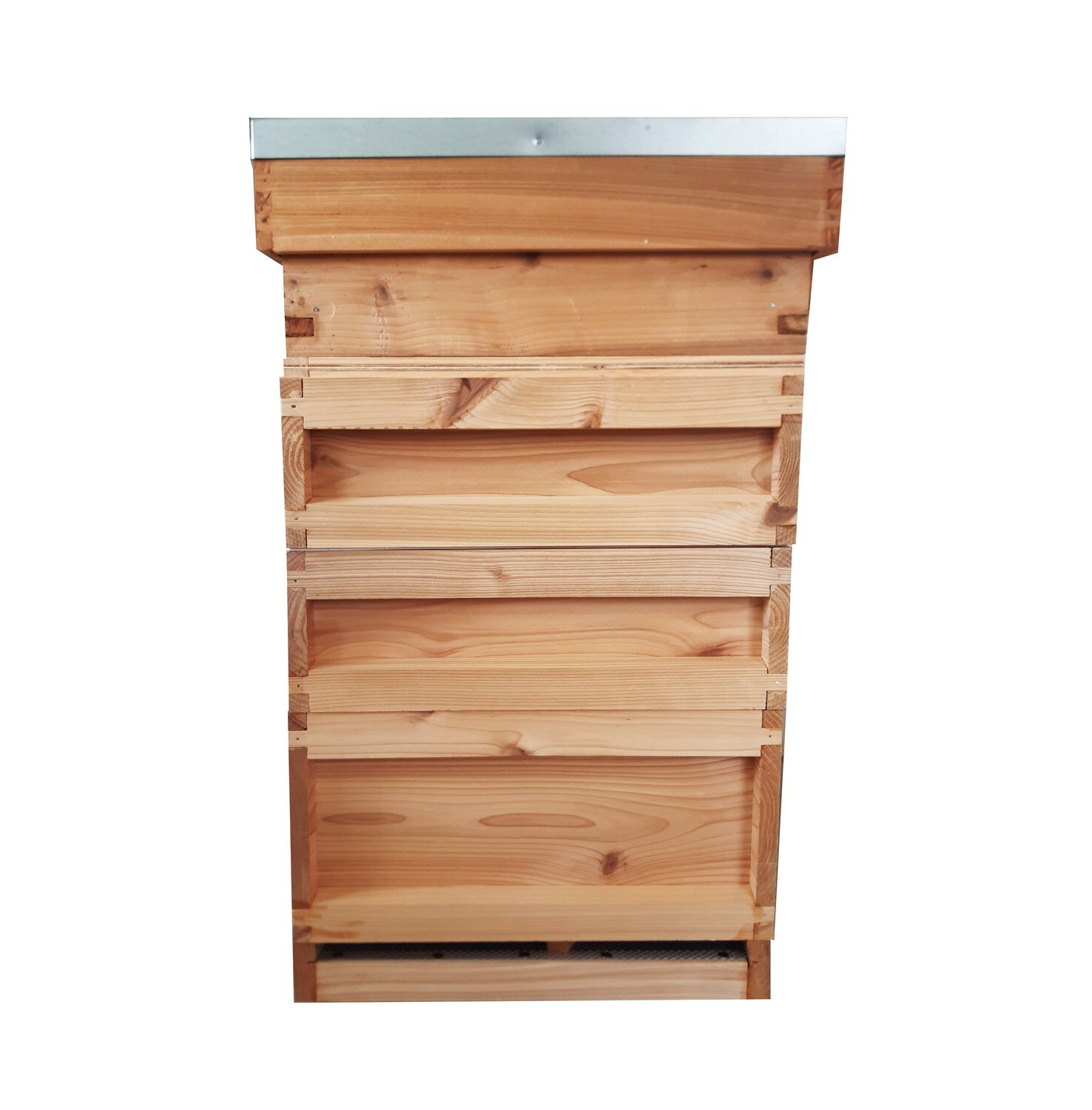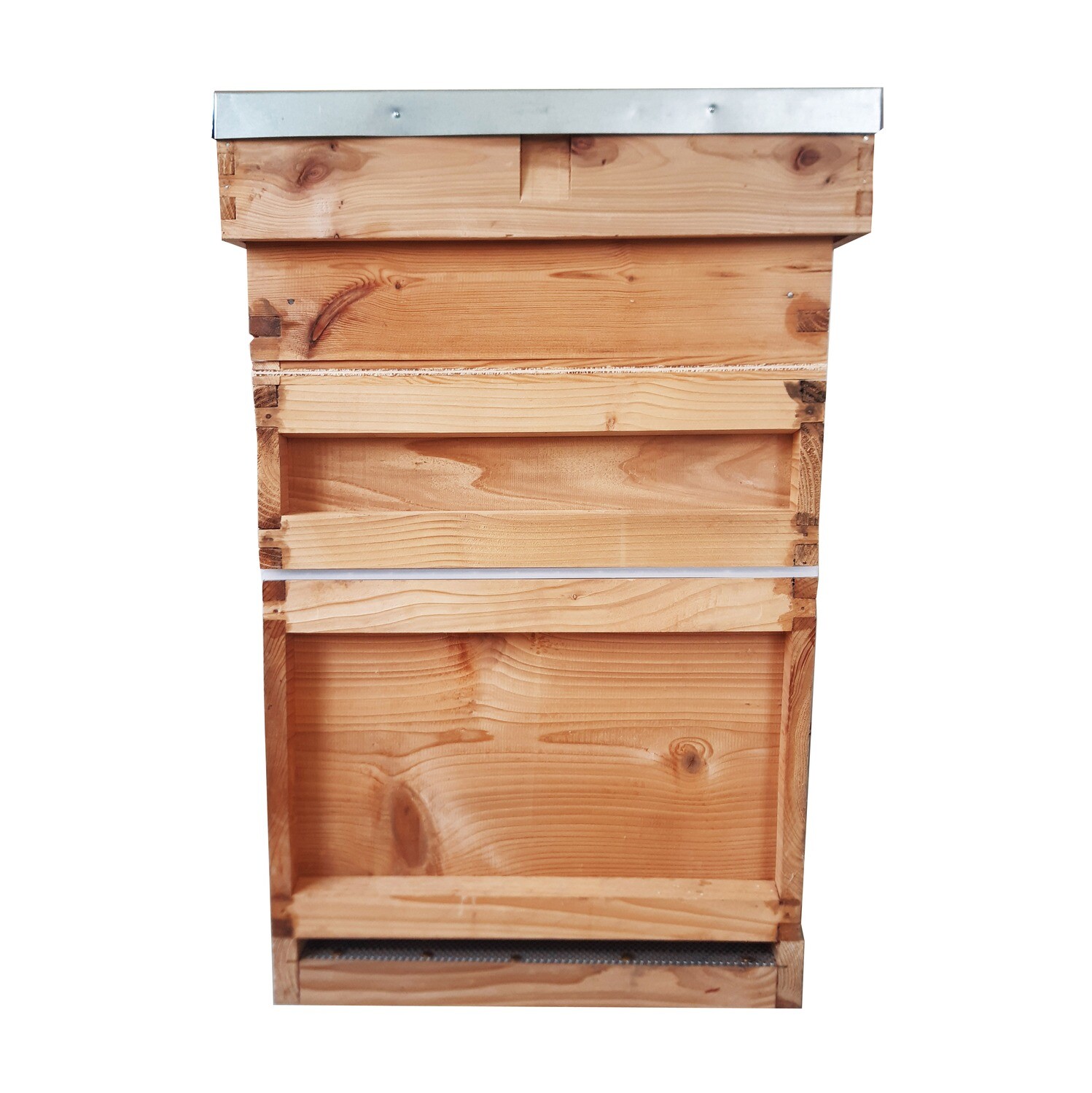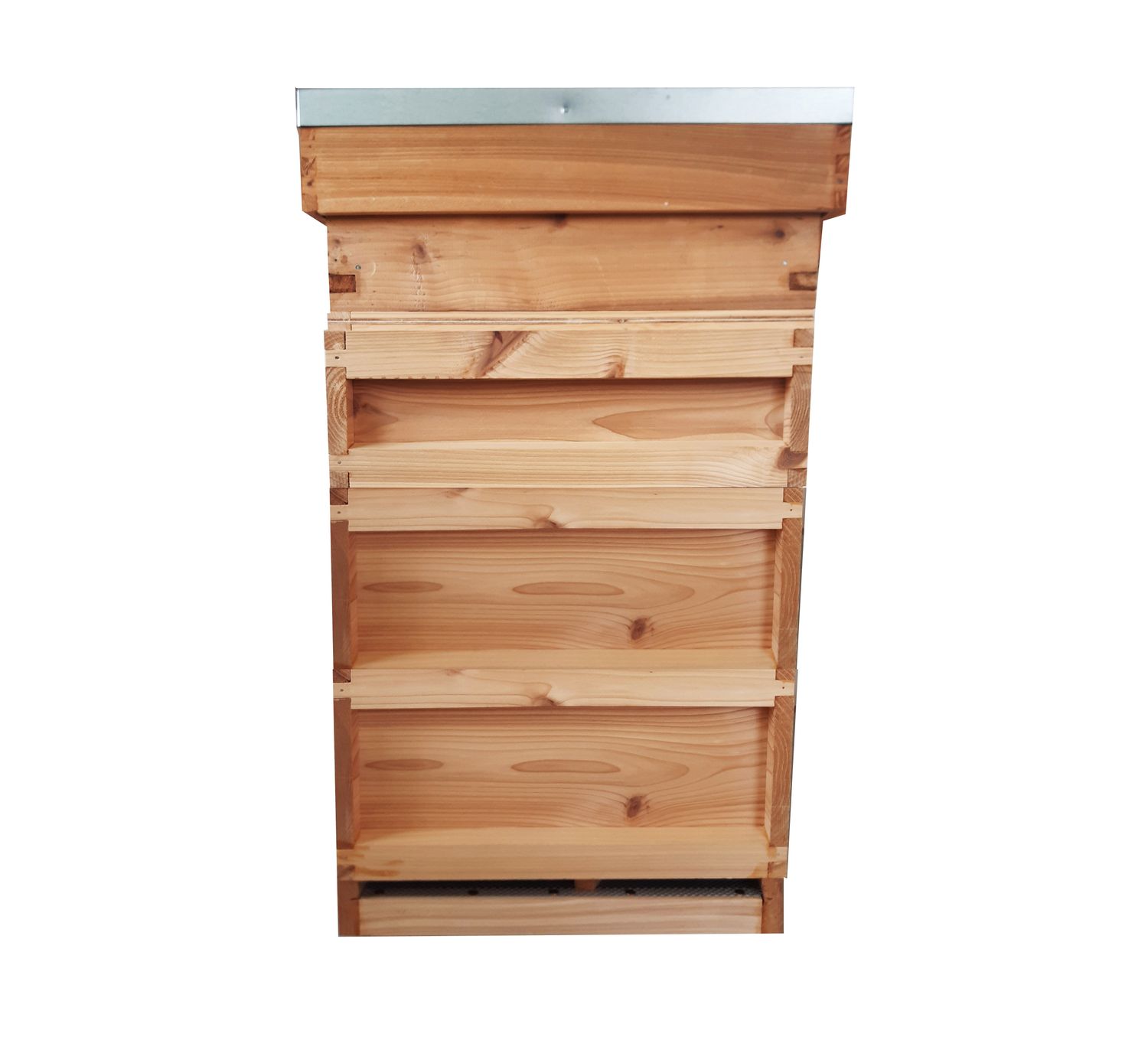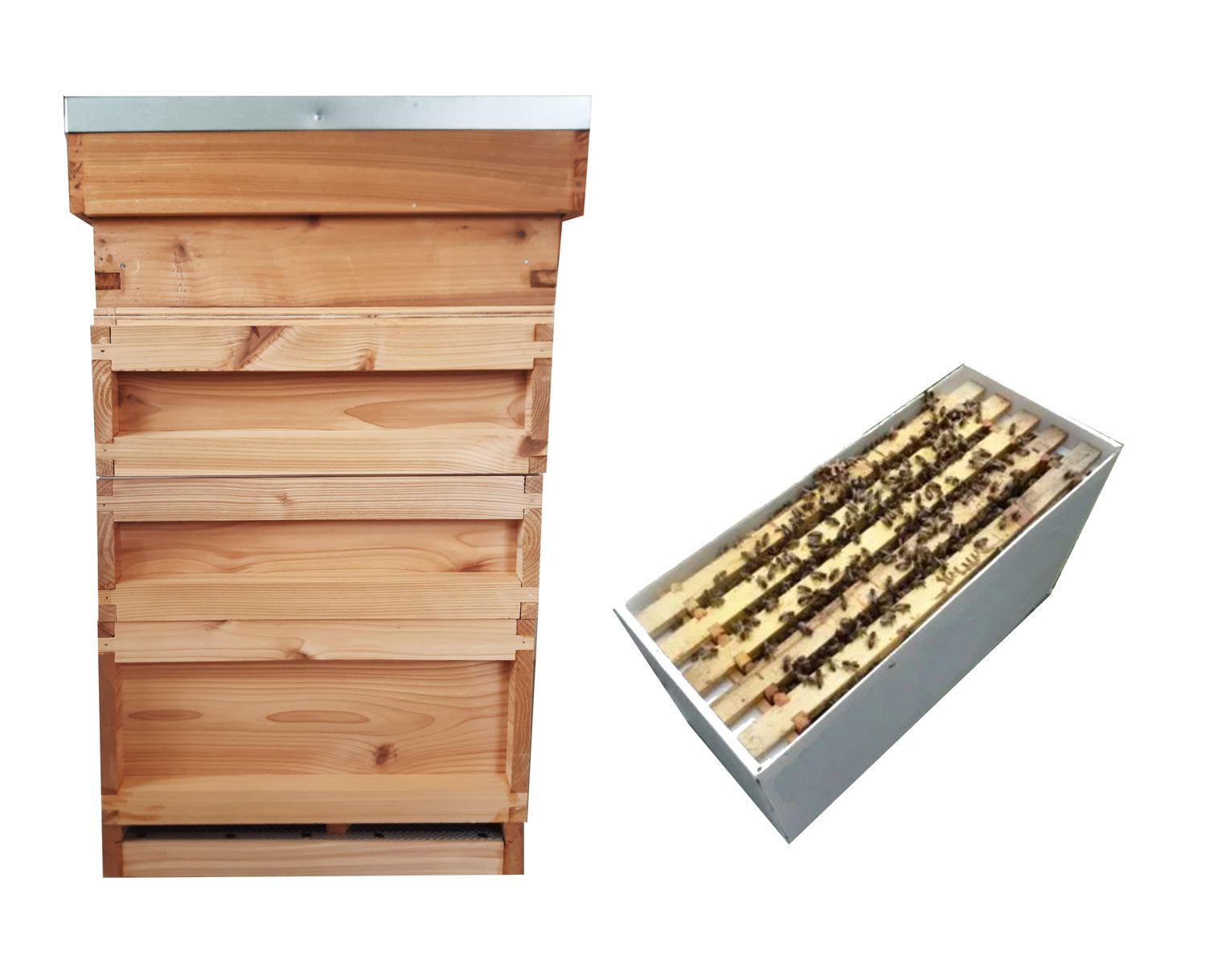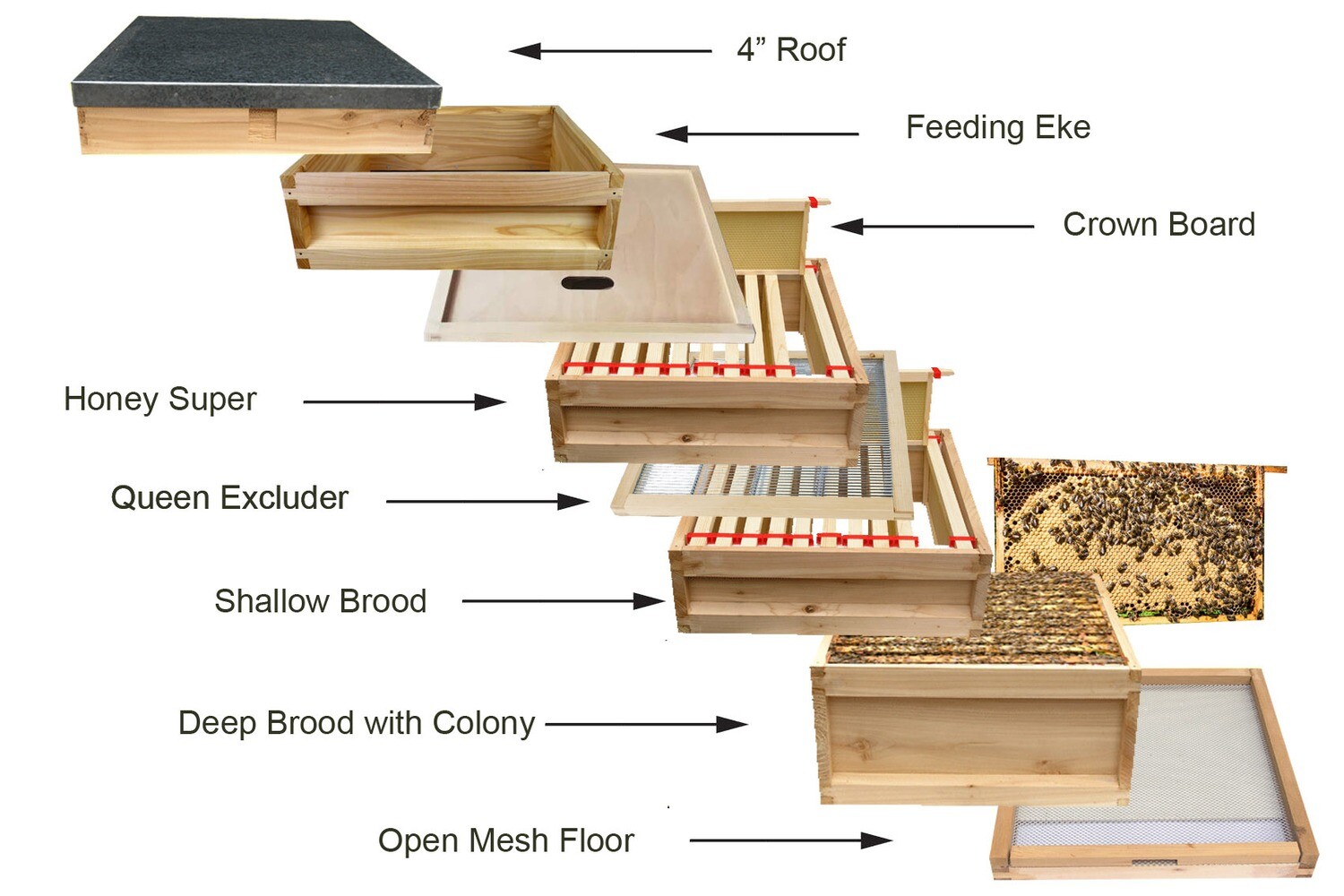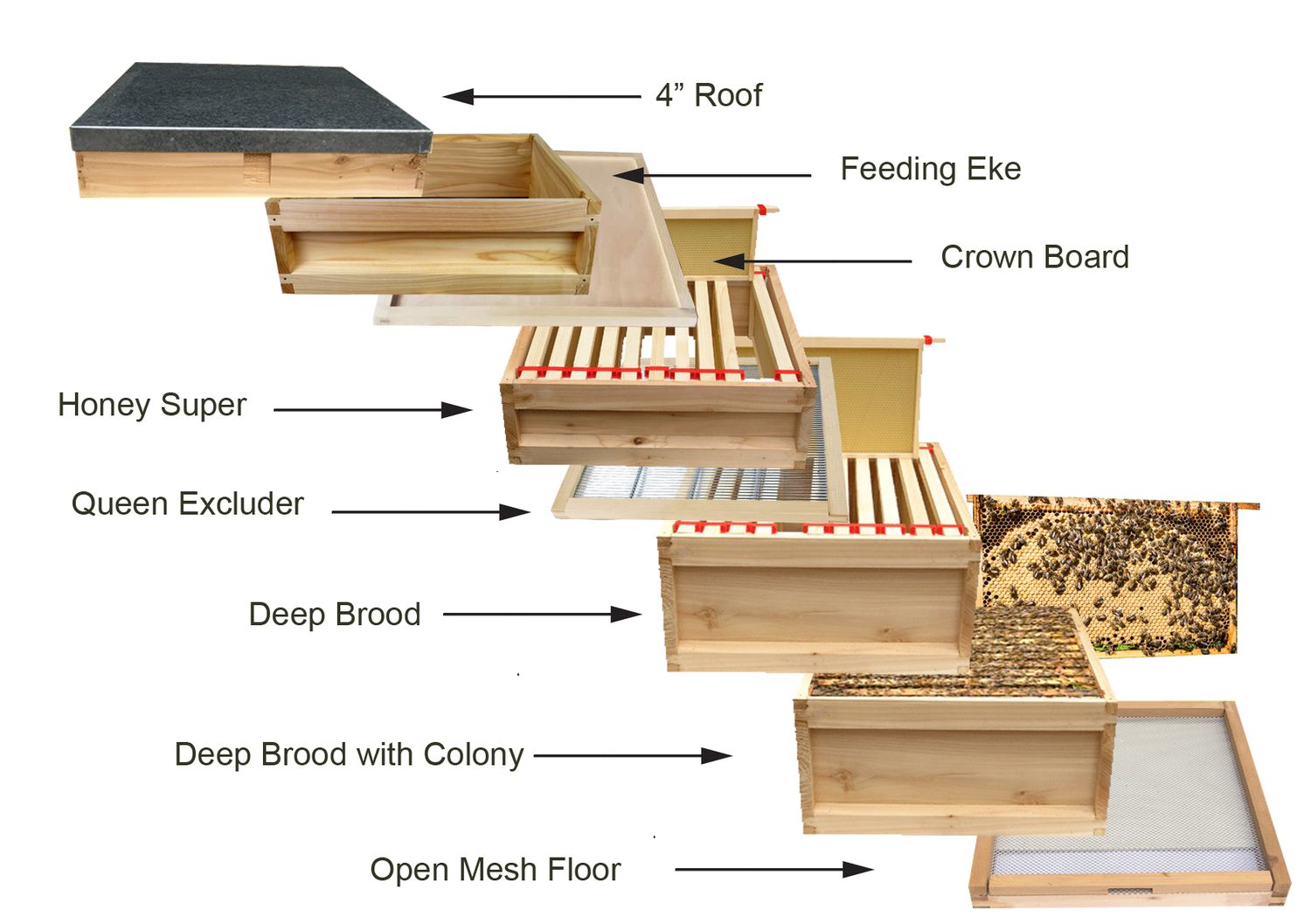Choosing Your Hive Setup
🐝 Choosing Your Hive Setup – Pros & Cons
Choosing your first hive can feel overwhelming, but it really comes down to two simple steps:
Step 1: Choose Your Brood Configuration
This decides how much space your bees have to raise brood. Each option (1½ Brood, Double Brood, or 12×14) has its own pros and cons depending on whether your focus is honey production, colony growth, or easier inspections.
Step 2: Choose Your Hive Type
Once you’ve chosen the brood setup, decide on the style of hive you prefer: National, WBC, Commercial, or Langstroth. Each has its strengths in terms of practicality, availability of spares, and how easy they are to work with.
👉 Work through these two steps below to find the best hive for your beekeeping goals.
🐝 Choosing Your Brood Configuration
1. 1½ Brood (Deep + Half Brood Chamber)
✅ Pros:
- Fills quickly → ideal if you want honey production in your first season.
- Only 11 deep + 11 shallow brood frames before adding honey supers.
- Lighter shallow brood frames are easier for beginners to handle.
⚠️ Cons:
- Brood is spread across two box depths → more fiddly inspections.
- Mixed frame sizes mean some management complexity.
2. Double Brood (Two Deep Boxes)
✅ Pros:
- All brood on deep frames only → tidy housekeeping and simpler frame management.
- Best for beekeepers planning to expand their apiary → easy to make strong splits once both boxes are full.
- Excellent for larger colonies or prolific queens.
⚠️ Cons:
- Slower to fill before honey supers can go on.
- Twice as many deep brood frames to inspect.
3. 12×14 Jumbo National (Single Large Brood Box / Commercial)
✅ Pros:
- All brood in one large box → only 11 frames to inspect.
- Reduces the need for brood-and-a-half management.
- Simple, clean setup.
⚠️ Cons:
- Colonies are slower to build up to full box strength.
- Splits are harder to manage compared with double brood.
- Heavier frames → more lifting effort.
- Large frames can be awkward to handle, making inspections slower.
👉 In summary:
- Pick 1½ Brood if your priority is early honey production.
- Pick Double Brood if you want easy splits and expansion.
- Pick 12×14 if you prefer simpler inspections with fewer frames but the frames are very large so are not the best beginner hives.
🐝 Choosing Your Hive Type – National, WBC, Commercial, or Langstroth
Once you’ve decided on the brood box configuration (1½, Double, or 12×14), the next choice is the hive type. Each has unique strengths and considerations:
1. National Hive (Our Standard Hive — available with or without bees)
✅ Pros:
- Most popular hive in the UK → easy to source spares, accessories, and nucleus colonies.
- Straightforward single-walled design → practical for beginners.
- Long frame lugs make inspections simple and secure.
- Only hive type we offer with live bees included (ready-to-go colonies).
⚠️ Cons:
- Single-walled → not as well-insulated as WBC.
2. WBC Hive (William Broughton Carr Hive)
✅ Pros:
- Double-walled design → warmer in winter, cooler in summer.
- Traditional “storybook” hive appearance.
- Available in 1½, Double, or 12×14 brood setups.
⚠️ Cons:
- Expensive due to the outer lifts.
- Lifts make inspections more cumbersome (more parts to remove/replace).
- Can’t be positioned on beams for easy sliding during splits.
3. Commercial Hive
✅ Pros:
- Larger brood box, similar in capacity to 12×14 National.
- All brood in one big box → fewer frames to inspect.
- Sturdy, simple design.
⚠️ Cons:
- Shorter frame lugs make handling more awkward than Nationals.
- Spares and accessories are less widely available than Nationals.
- Buying nucleus colonies on Commercial frames can be harder.
- Frames are heavy when full and difficult to handle for beginners
4. Langstroth Hive
✅ Pros:
- International standard → widely used outside the UK.
- Similar advantages to Commercial and 12 x 14 National: large brood area in one box, fewer inspections.
⚠️ Cons:
- Shorter frame lugs make handling more awkward than Nationals.
- Slightly smaller capacity than a Commercial or 12×14 National.
- Same as Commercial: spares, accessories, and nucs harder to source in the UK.
- Not as common in the UK → fewer local suppliers and beekeepers using them.
👉 In Summary:
- Nationals are best for beginners (widest support, easiest to expand, frames are easy to handle, live colonies available).
- WBCs are beautiful and well-insulated but less practical and more expensive.
- Commercials and Langstroths offer big single-brood setups but are less supported in the UK. The National 12×14 gives the same large single-brood benefits as Commercials/Langstroths, but with the added advantage of UK-standard equipment, accessories, and nuc availability. The frames are harder to handle due to their size.
Display prices in:GBP
